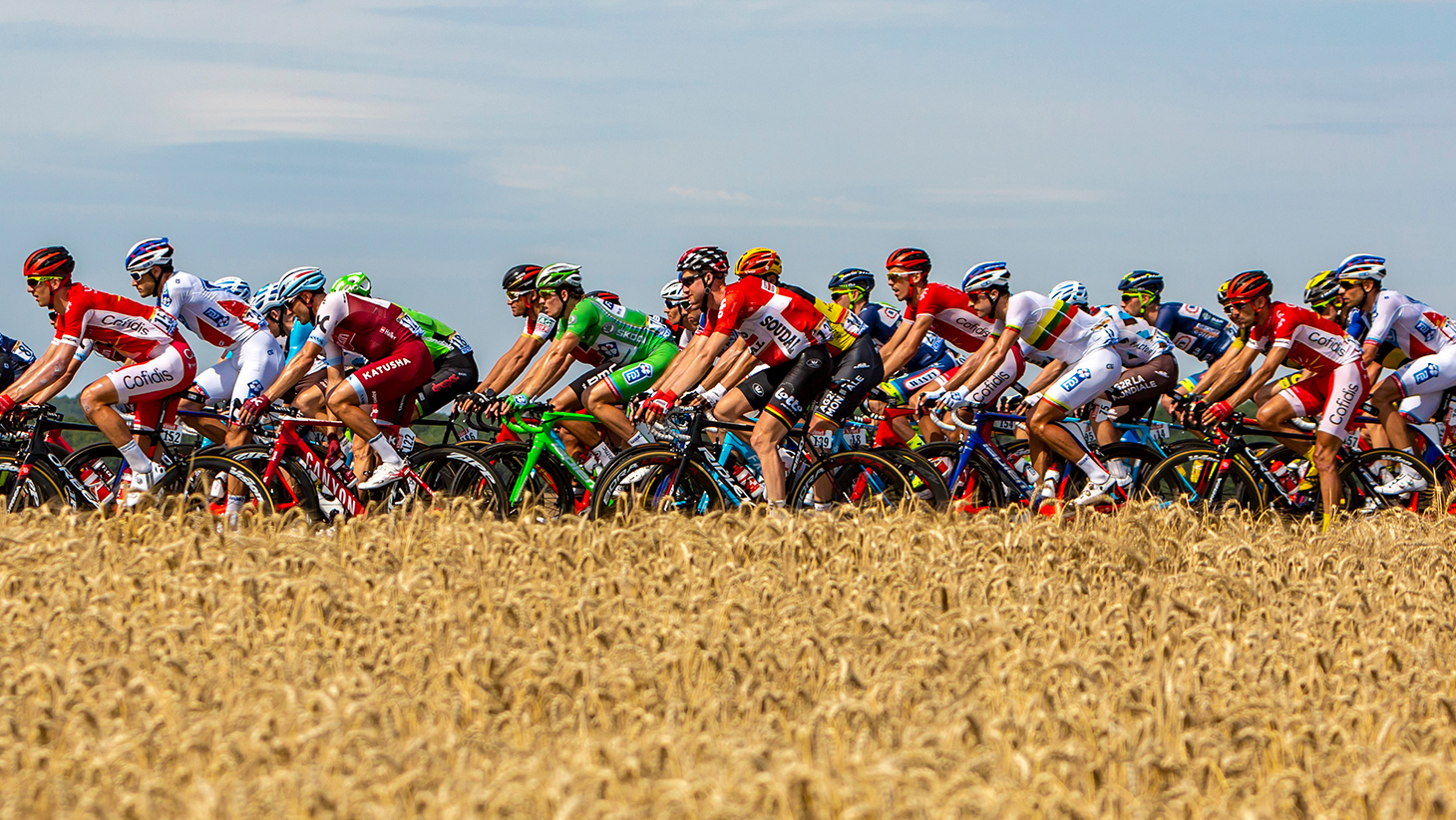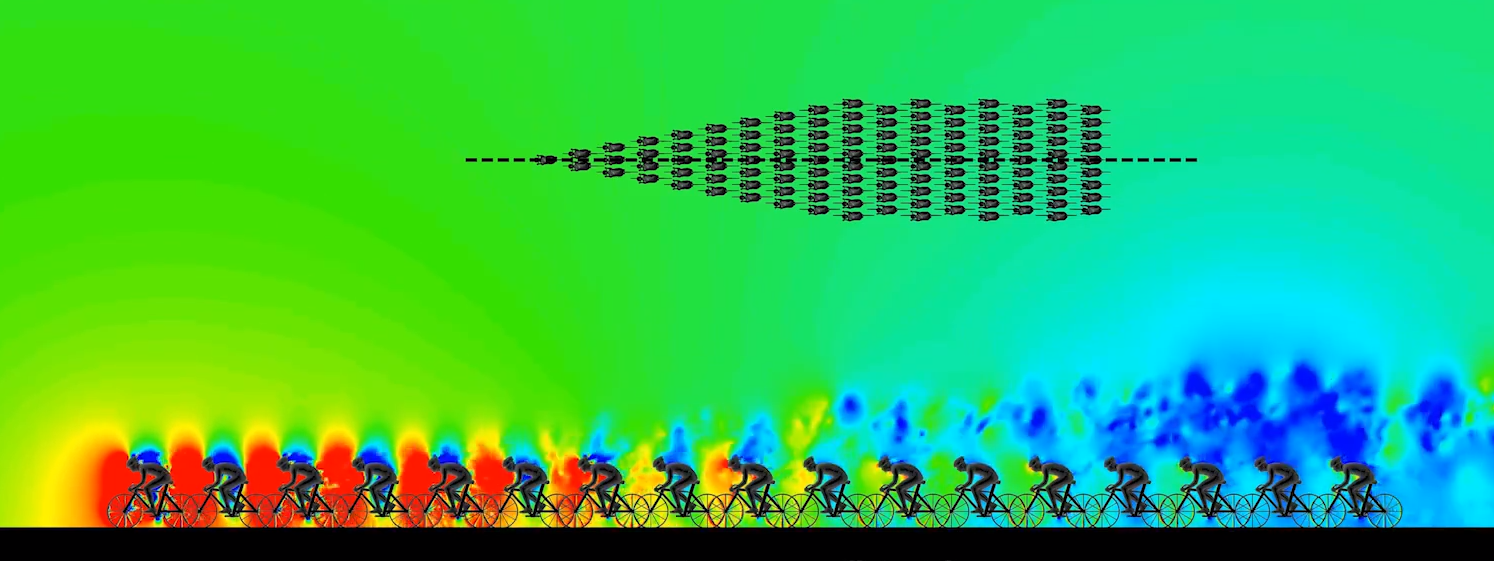
Simulation proves that operating as a platoon reduces effort by more than 90%
We can start off this topic by observing nature. Birds usually fly on migratory routes using an arc or V-shape formation. Flying in an organized manner and in a flock is a strategy used by these birds to decrease caloric expenditure and thus reach greater distances.
The energy savings are such that the birds can fly distances up to 70% farther than if they flew in disarray.
An example worth mentioning is the case of the swan, which flies over two thousand kilometres a day at an average speed of 130 kilometres per hour. Per day, it can travel the equivalent of the route from São Paulo to Salvador.
The positioning also helps birds to keep an eye on each other, since none can leave sight of the other, it is a matter of survival. When in groups, they are more protected from predators.

Before we talk about the recent study on locomotion effort involving cyclists and computer simulation, let’s briefly talk about how it all began. Initial research was conducted involving the cooperation of the environmental group Waldarappteam in Austria with British scientists at the Royal Veterinary College in London.
The species chosen for the study was the hermit ibis, an endangered bird. The researchers fitted trackers that recorded the speed, position, and every movement of the birds’ wings.
The data revealed that the birds strategically position themselves in order to take advantage of the momentum generated by the air displacement caused by the wing flapping of the bird flying ahead. Even the wing flapping is synchronized to avoid any unnecessary effort.
The flocking formation of the birds demonstrates how much we can still learn from nature’s energy-saving strategies.
Birds of Steel
Animal inspiration is on the radar of aviation professionals. Speaking to the Royal Academy of Engineering Lecture, Richard Deakin, chief executive of National Air Traffic Services (NATS), said that in the near future – in less than 30 years – airlines will fly their aircraft in formation as birds do.

The flight safety margin of about 20 aircraft – far less than the four nautical miles that separate civil aircraft today, will be enough, airbus stated.
In a V formation of 25 birds, each can reduce induced drag by up to 65% and increase its range by 7%. While the efficiencies for commercial aircraft are not large, they remain significant.
From birds to tracks: Simulation and cycling
As it could not be otherwise, in cycling you pedal in a flock, just like birds, to protect yourself from the wind and experience less air resistance.
Professional cyclists and trainers suggest that when you are snug in the “belly of the pack,” there is often no need to pedal, so air resistance is significantly less.

Bert Blocken, Ph.D. professor at the Department of Building Environments at the Eindhoven University of Technology in the Netherlands and the Department of Civil Engineering in Leuven, Belgium, has conducted a study in partnership with Ansys and Cray.
In the midst of their research, they discovered that in the middle of a platoon the cyclists experience only 5 to 10 percent air resistance compared to the rest. The result was demonstrated by computer simulations using Ansys tools and wind tunnel tests. Both methods run independently, and came up with the same results.
This new study shows the distribution of air resistance for each cyclist in a 121-member peloton for the first time. The results show that in the middle and back section of the peloton it is as if the individual is pedalling 12 to 15 kilometres per hour in a peloton that is accelerating at 54 kilometres per hour. This is why it seems right that the riders spend little energy in these positions.
We should not misinterpret these results: an amateur cyclist can ride along with a platoon of professional cyclists for a short distance and under the conditions of the study on a flat, straight road. But as soon as the cyclist curves his route, the accordion effect arises, the pack stretches out and the resistance becomes greater.
The conditions become almost impossible for the amateur. The air resistance results (below) offer additional insight into how exceptional the elite cyclists’ performances are.


The air resistance for each of the 121 cyclists in a cycling peloton, as a percentage of the air resistance of a single cyclist.
Pilots can feed off this data to figure out the best positioning in a platoon. At the back, air resistance is very low, but there are fewer opportunities to react to attacks and crashes happen more often.
For top-level pilots or sprinters, the researchers recommend that the best position would be on line six, seven, or eight, where they are sufficiently protected by other pilots and the short distance to the front makes it possible to react as the race requires.
Professor Blocken’s teams examined two platoons of 121 cyclists, where the distance between the lines differed as in a real race. The computer simulations added up to 3 billion cells – a world record for a sports application – and required Cray supercomputer licenses and high-performance computing (HPC) from Ansys. The simulations ran continuously to completion for 54 hours and used a total of 49 terabytes of working memory.

